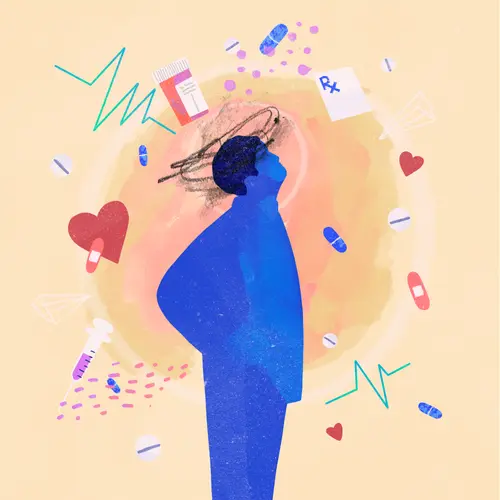Lipoproteins are a combination of proteins and fats found in your blood. They are categorized based on their density. Very low-density lipoprotein (VLDL) is regarded as bad cholesterol.
VLDL and low-density lipoprotein (LDL) are generally considered more harmful than high-density lipoprotein (HDL).
All kinds of lipoproteins are required by the body because they carry cholesterol through the blood, and cholesterol is necessary for building cells.
Lipoprotein densities differ based on the amounts of proteins, cholesterol, and triglycerides in them. VLDL carries more triglycerides, while LDL contains more cholesterol.
Both LDL and VLDL are regarded as bad when there’s too much of them in the body. If the VLDL level in your blood is very high, it can clog your arteries, leading to heart complications.
What Is the Function of VLDL?
Although harmful when its levels are too high, VLDL plays an important role in your body. It’s created by the liver and released into the bloodstream. The VLDL particles carry different types of fats, including triglycerides, to your cells.
LDL, on the other hand, carries more cholesterol to your tissues.
Meanwhile, HDL carries unused cholesterol from the body cells back to the liver, which removes it from your body. That's why a higher concentration of HDL is generally considered good for the body.
How Are VLDL Levels Measured?
There’s no direct way to measure VLDL in your body. Instead, a blood test will show you the level of triglycerides in your blood. Your doctor can then use the triglyceride level to determine if your VLDL levels are average, below, or above normal.
On average, the VLDL cholesterol levels in your blood should not be more than 30 milligrams per deciliter.
Is VLDL Harmful?
A high concentration of VLDL is harmful to the body. Free radicals are more likely to damage some lipoproteins, including VLDL. Through this process, the lipoproteins become harmful to heart health.
Many food companies advertise their products as low in cholesterol, but dietary cholesterol doesn't influence your body's cholesterol levels significantly. That's mostly because the liver controls cholesterol production. The more cholesterol you eat through food, the less your liver will make.
Two things that can increase your VLDL levels are smoking and a sedentary lifestyle.
How Do I Reduce My VLDL Cholesterol?
Here are some ways to reduce the amount of VLDL cholesterol in your blood.
Eat monounsaturated fats
Monounsaturated fats have one chemical double bond in them. This means your body uses them differently than saturated fats. Some good sources of monounsaturated fats are avocados, olive oil, olives, canola oil, and almonds.
A 12-week study with 20 participants found that low-to-moderate intensity exercise alleviated risk factors for cardiovascular disease in obese elderly women. Another study of 24 participants showed that the study subjects whose diet was higher in monounsaturated fats had 12% more HDL.
Monounsaturated fats also help prevent VLDL oxidation by free radicals, protecting you from heart disease. In a study of 26 participants, researchers found that a diet consisting of monounsaturated fats reduced cholesterol and fat oxidation.
Exercise
An inactive lifestyle can increase VLDL levels in your body. Exercising keeps you healthy and increases HDL levels while lowering harmful LDL.
In a 12-week study, researchers found that resistance exercise and aerobic activity reduced the level of LDL in 20 women. The study participants only exercised for 15 minutes three times a week. The aerobic activities included jumping jacks, walking, and low-intensity Korean dance.
Exercise can also help you lose weight, which lowers VLDL levels in the body. A study with 90 adult male participants found that weight loss reduces the amount of cholesterol produced by the liver.
If you have any concerns about your cholesterol levels or you have a heart condition, talk to your doctor before making any significant changes in your physical activity or diet.
